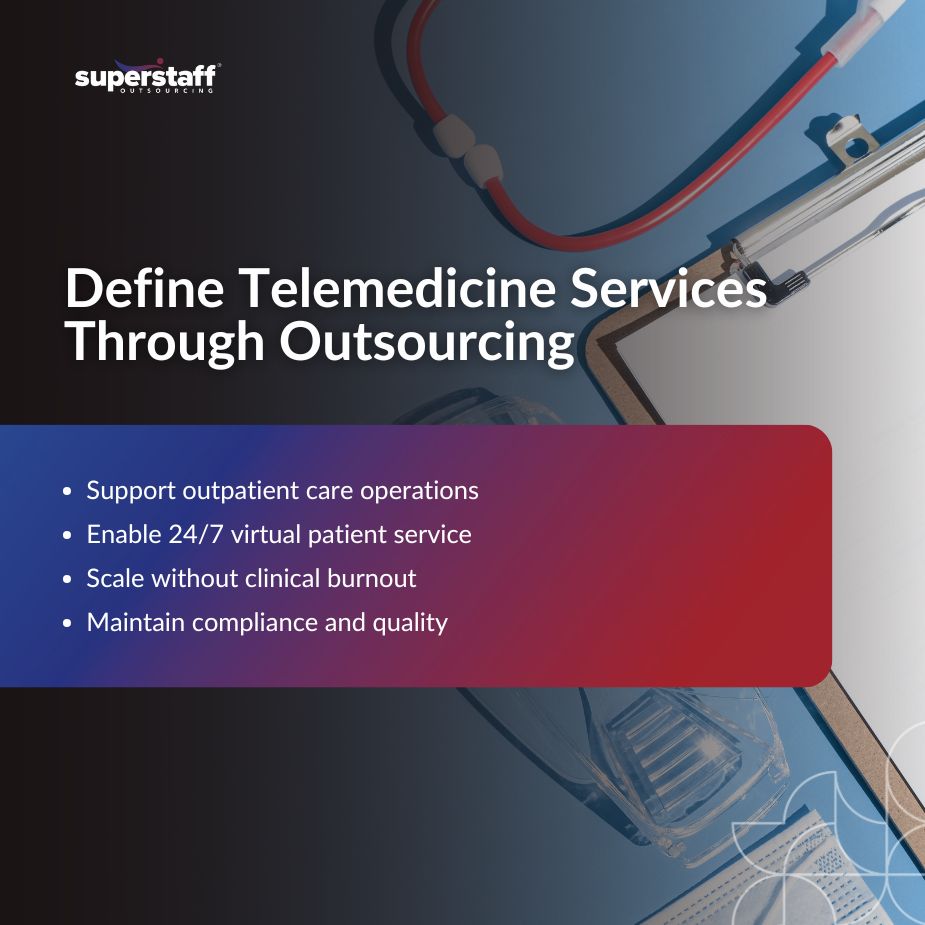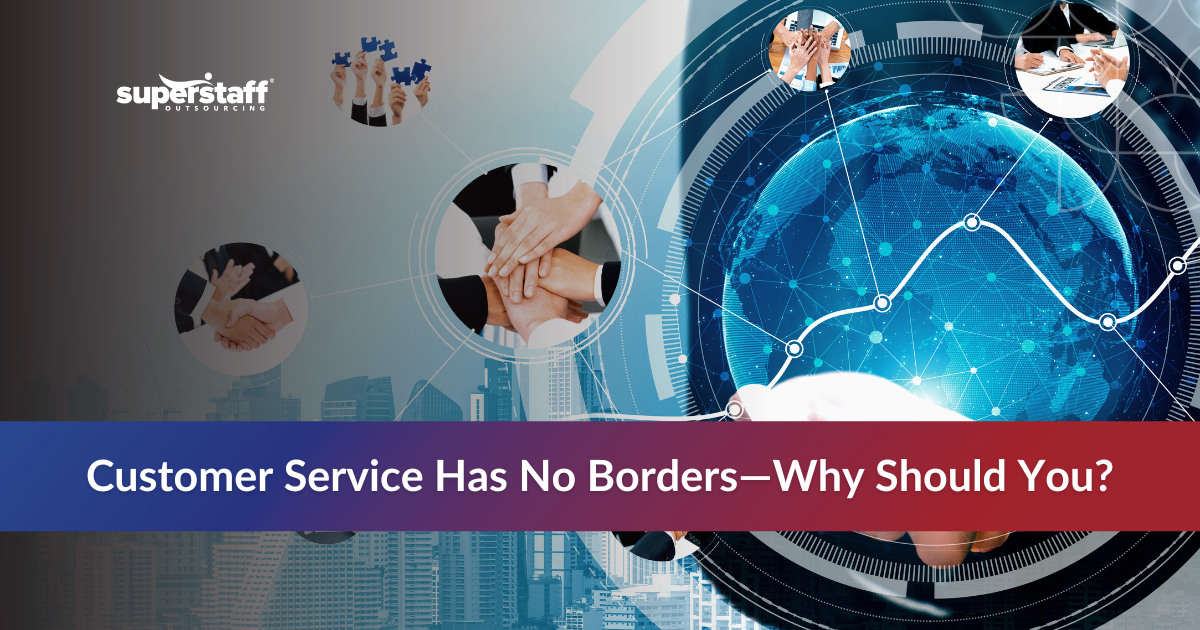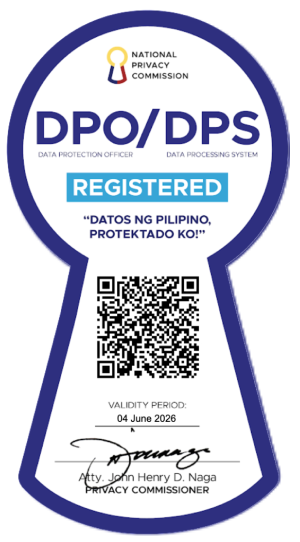
The U.S. healthcare system is no longer confined to clinics, hospitals, or waiting rooms. As a result, care is moving beyond walls—onto screens, into homes, and into the hands of patients. This rapid shift in care models is challenging providers to adapt at a speed the traditional system wasn’t built for. In response, many are turning to global partners for help—especially those that can define telemedicine services not just in theory, but in daily execution.
This shift from clinic-based to click-based care is about more than technology. It’s about creating a delivery model that’s scalable, patient-centric, and resilient to disruption. Outsourcing is proving to be one of the most powerful tools in achieving that—especially for providers navigating cost pressures, staffing shortages, and the logistical demands of 24/7, non-acute care delivery. In this blog, we’ll explore how healthcare outsourcing enables providers to thrive in the era of decentralized, digital-first care.

The Great Healthcare Migration: From Hospitals to Homes
Today, traditional hospital-based care is no longer the default. With hospital admissions declining and outpatient visits surging, the industry is undergoing a structural evolution. Indeed, at the heart of this transformation is the patient—more informed, more selective, and increasingly looking for care that fits their life, not the other way around.
As a result of the pandemic, telehealth adoption spiked across nearly every demographic, demonstrating that remote care could be effective, convenient, and safe. Patients now expect this flexibility as a standard, not a perk. As they seek faster access and lower costs, they’re embracing retail clinics, urgent care centers, and at-home monitoring tools. Consequently, this demand has also fueled the rise of telehealth solutions online that promise instant connectivity with virtual healthcare providers across primary care, mental health, and chronic condition management.
In turn, healthcare executives are being forced to reevaluate how they define telemedicine services within their own organizations. It’s no longer just a video consult—it’s a fully integrated care experience requiring seamless technology, trained support staff, and end-to-end logistics.
Behind the scenes, though, this migration is complex. New delivery models demand new operational strategies—and a level of agility most internal hospital systems struggle to provide. That’s where healthcare outsourcing enters the picture.
Outsourcing as the Infrastructure Behind Virtual and Non-Acute Care
To run a non-acute or virtual-first care model, providers need a support structure that can flex as fast as the market demands. In turn, outsourcing gives them exactly that. Offshore teams can provide skilled support in areas like patient coordination, billing, insurance verification, and telehealth onboarding—at scale and around the clock.
Healthcare organizations are increasingly relying on outsourcing to manage the administrative and tech-enabled side of virtual care. HIPAA-trained agents in call centers handle everything from scheduling to claims submission. Patient care coordinators ensure treatment plans stay on track, while coders and compliance professionals maintain accuracy and integrity in documentation. In fact, these functions are essential to non-acute care models, where margin for error is low, but operational burden is high.
To fully define telemedicine services that meet today’s patient demands, the support framework must be robust and adaptable. BPOs provide the necessary agility to manage real-time care coordination without disrupting internal clinical workflows.
When you define telemedicine services as a smooth process of care, the role of backend support becomes clear. Without it, providers risk bottlenecks in communication, coverage gaps, and declining patient satisfaction. Outsourcing fills these gaps—efficiently and affordably.
Speed-to-Market: Why Offshore Teams Are Vital to Virtual Care Expansion
As such, telehealth and virtual-first companies are scaling faster than ever—but they can’t do it alone. Hiring a full in-house team for every new market or specialty isn’t just expensive; it’s impractical. Outsourcing gives these providers the power to scale on demand.
Startups in mental health, chronic care, and digital therapeutics often rely on outsourced teams to manage everything from IT support to patient outreach. With healthcare BPOs already equipped with EMR-trained agents, multilingual capabilities, and compliance protocols, onboarding takes weeks—not months.
Looking to integrate with a new telehealth platform or insurance portal? An offshore development team can provide help while your clinicians focus on care delivery. Want 24/7 patient support for medication reminders, follow-ups, or triage? A call center in the Philippines can bridge time zones and languages. Companies that define telemedicine services not just by convenience but by quality are the ones investing in smart outsourcing models. These partnerships help them move quickly, stay lean, and focus internal resources where they matter most—on patient outcomes.
Keeping Quality and Compliance at the Forefront
On one hand, scaling virtual care is one thing—doing it securely and ethically is another. Healthcare data is among the most sensitive in the world, and any outsourcing arrangement must be airtight when it comes to compliance. Fortunately, top healthcare BPOs have risen to the challenge, building in security checks and QA tools at every step of the process.
The best partners invest heavily in HIPAA, HITRUST, and GDPR compliance. They provide specialized training to ensure agents can communicate with empathy, professionalism, and technical fluency—even through a screen. QA teams track every interaction against SLAs, and managers use performance reviews to maintain alignment with provider KPIs.
Moreover, this focus on compliance isn’t just about avoiding penalties. It’s also about patient trust. When healthcare outsourcing is done right, it enhances—not compromises—the quality of care. Patients still feel heard. Claims are processed faster. Records stay secure.
Therefore, every healthcare provider needs to define telemedicine services in a way that includes operational excellence. That means building systems where quality, privacy, and responsiveness are never compromised, even when delivered at scale.
As more organizations define telemedicine services as part of their long-term strategy, working with a BPO that understands both the risks and rewards of virtual care becomes mission-critical.
Supporting Value-Based Care Through Engagement and Outcomes
Virtual care is a natural fit for value-based models. It enables proactive, preventive, and continuous engagement that keeps patients healthier—and reduces costs. Outsourcing extends these benefits by helping providers maintain regular contact, track results, and act on data.
Call centers play a vital role in appointment reminders, wellness check-ins, and following up on treatment. Offshore analysts can help review patient data to measure effectiveness and flag risks early. Engagement campaigns, powered by multilingual teams, help ensure that no population gets left behind.
This kind of infrastructure isn’t always feasible to build in-house. But with the right BPO partner, healthcare organizations can add capacity, close gaps, and deliver measurable results. These are the real benefits of outsourcing non-acute healthcare services—not just saving money, but driving better outcomes for the populations they serve.
When providers define telemedicine services through the lens of value, patient experience becomes a key metric. And outsourcing becomes a strategic enabler.
From Clinics to Clicks: SuperStaff’s Role in the Transformation
At SuperStaff, we’ve been on the front lines of this transformation. Our healthcare outsourcing solutions support a wide range of non-acute and virtual care providers—from durable medical equipment suppliers to digital health startups to outpatient care networks.
We provide patient coordination, billing and claims support, insurance verification, and more. Our teams are trained in U.S. healthcare protocols and bring both empathy and efficiency to every patient interaction. We’re HIPAA-compliant, process-driven, and scalable.
When healthcare companies define telemedicine services or build virtual care programs, they often turn to us to bring those visions to life. Our team integrates seamlessly into EMRs and platforms. Implementation is fast—we ramp up quickly. Every solution is tailored to your needs.
More importantly, we understand that at the heart of healthcare outsourcing is a human connection. Whether it’s a follow-up call, a benefits explanation, or a chronic care check-in, we make every touchpoint count. Because in a virtual-first world, your support team is your front line.
Why Providers Must Embrace Healthcare Outsourcing to Define Telemedicine Services at Scale
The move toward non-acute and virtual care isn’t just a trend. Rather, it’s a structural shift in how healthcare is delivered—and it’s happening now. To succeed, providers must find new ways to scale, adapt, and engage with patients in digital and decentralized settings. The ability to define telemedicine services as comprehensive, compliant, and compassionate requires the right infrastructure.
Outsourcing offers that infrastructure. More importantly, it provides scalability, speed, and specialized talent. It supports everything from claims to coordination, freeing up internal teams to focus on what they do best: care. With the right BPO partner, healthcare organizations can accelerate digital transformation without sacrificing quality or security.
SuperStaff is that partner. With deep healthcare experience, operational flexibility, and a commitment to excellence, we help you bridge the gap between clinic and click. Whether you’re launching a virtual care service or expanding an outpatient network, we’re here to support your mission—securely, seamlessly, and at scale.
Let SuperStaff help you build a future-ready healthcare operation that meets your patients where they are—at home, on-screen, and beyond!






